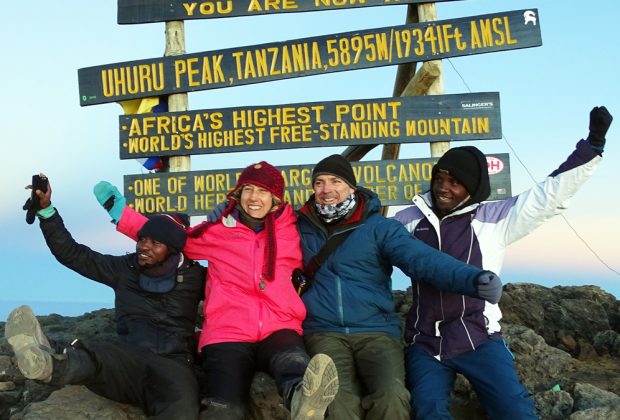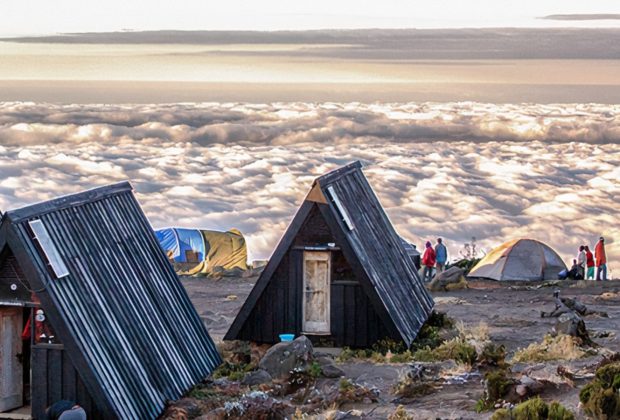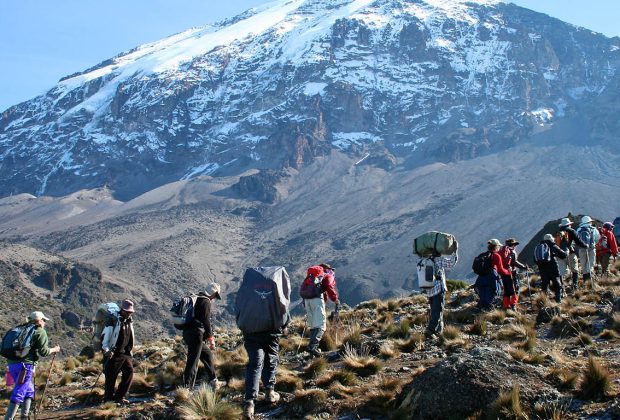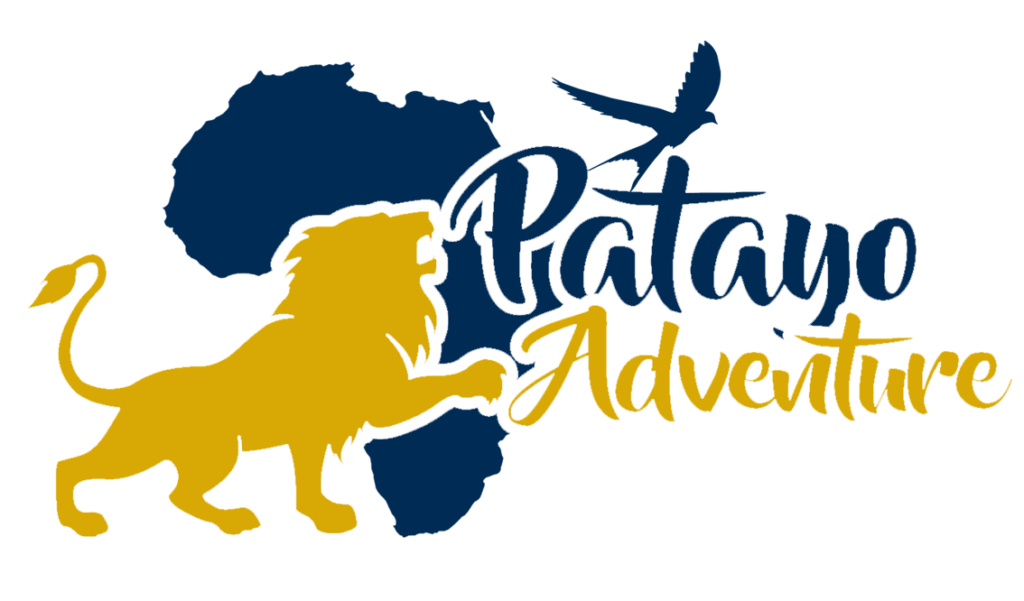10-Day Climb Kilimanjaro Crater Route + 2 Days Hotel Stay
Tour Overview
Embark on the extended Northern Circuit Route with a unique overnight camping experience at Kilimanjaro Crater, the highest point at the equator. Enjoy unparalleled views of the Milky Way and Kilimanjaro Glaciers from this extraordinary altitude. Rest assured, our experienced Kiliholidays Team prioritizes your safety throughout this unforgettable journey.



Day 00 | Departure
Enjoy a relaxing stay at the hotel before your departure, with check-out scheduled for 11:00 AM. If you have an evening flight and require a late check-out, you can extend your hotel stay for an additional fee. Take advantage of this time to unwind before your journey back home.
Day 1 | Arrival and Briefing
Upon arrival at Kilimanjaro International Airport (JRO), you’ll be warmly welcomed by a representative from Kiliholidays. They will accompany you to the hotel, where you’ll find all the amenities for a comfortable stay, including cozy rooms, hot water, friendly staff, a swimming pool, and Internet access. Later in the evening, there will be a comprehensive briefing session with our managers to ensure you’re well-prepared to begin your trekking adventure.
Day 2 | Trekking From Londorossi Gate to Mti Mkubwa Camp
Your day starts with a morning briefing with your guide and mountain support crew. Afterward, you’ll embark on a scenic drive (approximately 3–4 hours) to the western entrance of Kilimanjaro National Park: Londorossi Gate (2,200 m). Following the necessary formalities of acquiring climbing permits and registering with the search and rescue service, the trekking journey commences towards the first camp, Mti Mkubwa Camp (2,780 m). Rain covers are essential as you traverse the dense tropical forest, where heavy rains are common. Upon reaching the camp, our expert mountain crew will have everything prepared, including tents and a delicious lunch. An acclimatization hike towards Shira 1 Camp will be undertaken after lunch, followed by a hot dinner back at Mti Mkubwa Camp.
Day 3 | Trekking From Mti Mkubwa Camp to Shira 1 Camp
An early start leads to a gradual ascent to an altitude of 3,500 meters, offering stunning views of Shira Plateau and Kibo Volcano. The trek to Shira 1 Camp (3,505 m) is relatively easy and takes around 5-6 hours. This gradual ascent aids in acclimatization, a vital aspect of a successful Kilimanjaro trek. Upon arrival at the camp, lunch will be served, followed by leisure time to rest or explore the surroundings.
Day 4 | Trekking From Shira 1 Camp to Shira 2 Camp
Departing from Shira 1 Camp, the day’s trek leads to the second high-altitude camp, Shira 2 Camp (3,900 m). This scenic trek provides spectacular views of Mount Meru and the surrounding area. Upon reaching Shira 2 Camp, lunch will be served, followed by an acclimatization hike towards Lava Tower. Afterward, return to Shira 2 Camp for rest and dinner.
Day 5 | Trekking From Shira 2 Camp to The Lava Tower and Descent to Moir Hut
After breakfast, depart Shira 2 Camp for the day’s trek towards Lava Tower (4,630 m). This section of the route involves varied terrain and ends with lunch at Lava Tower. Afterward, descend to Moir Hut, located on the northern part of Kilimanjaro. Note: Depending on the group’s condition, an alternate route may be taken to avoid exceeding 4,400 meters in altitude.
Day 6 | Trekking From Moir Hut to Buffalo Camp
Today’s trek involves traversing the northern slope of Kilimanjaro towards Buffalo Camp. Despite its length, the trek is relatively moderate, offering panoramic views of Tsavo and Amboseli Valleys. Upon reaching Buffalo Camp, rest and dinner will be provided.
Day 7 | Trekking From Buffalo Camp to 3rd Cave Camp
Continue trekking up the northern slope of Kilimanjaro to 3rd Cave Camp, where the route meets the traditional Rongai route. This shorter trek allows for complete acclimatization at an altitude of 4,000 meters, enhancing overall well-being.
Day 8 | Trekking From 3rd Cave Camp to School Hut
Today’s trek leads to School Hut Summit Camp (4,750 m). While not overly challenging, maintaining a steady pace is essential to conserve energy for the following day’s summit attempt. Upon reaching School Hut, prioritize rest and hydration in preparation for the final ascent.
Day 9 | Trekking from School Hut to Crater Camp and Uhuru Peak, then descent to Mellennium Camp
An early start precedes the challenging trek to the summit of Kilimanjaro, Uhuru Peak (5,895 m). While technically not difficult, the high altitude presents a significant challenge. After witnessing the breathtaking sunrise from Uhuru Peak, begin the descent to Mellennium Camp via Barafu.
Day 10 | Descent from Mellennium Camp to Mweka Gate
Descend through the tropical rainforest to Mweka Gate (1,650 m), where the entire group will gather for congratulations and reflections on the climb. Certificates commemorating your achievement will be presented before transferring back to the hotel for a well-deserved rest.
Inclusions:
- Accommodation: Lodging at Weru Weru River Lodge or similar.
- Meals: Breakfast, lunch, and dinner provided during the trek.
- Transportation: Transfer from Kilimanjaro International Airport to the lodge.
- Trekking Support: Experienced guide and mountain support crew.
- Climbing Permits: Acquisition of necessary permits for Kilimanjaro National Park.
- Equipment: Tents, sleeping bags, and other necessary camping gear.
- Activities: Trekking from Marangu Gate to Mandara Hut, Mandara Hut to Horombo Hut, Horombo Hut to Kibo Hut, and summiting Uhuru Peak.
- Briefings: Orientation and briefing sessions conducted by tour managers.
- Safety Measures: Registration with search and rescue service, as well as guidance on altitude sickness prevention.
- Certificates: Commemorative certificates upon successful completion of the trek.
Exclusions:
- International Flights: Airfare to and from Kilimanjaro International Airport.
- Travel Insurance: Personal travel insurance covering medical expenses, trip cancellations, and emergencies.
- Personal Expenses: Expenses for additional meals, beverages, souvenirs, and optional activities.
- Gratuities: Tips for guides, porters, and other staff members.
- Accommodation Beyond Itinerary: Any additional lodging required before or after the scheduled trekking dates.
- Airport Transfers: Transfers to the airport upon departure beyond the designated schedule.
- Visa Fees: Fees associated with obtaining entry visas for Tanzania, if applicable.
- Medical Expenses: Costs incurred for medical treatment or medications during the trek.
- Optional Activities: Any additional excursions or activities not specified in the itinerary.
What is Mount Kilimanjaro?
- Mount Kilimanjaro is the highest peak in Africa, located in Tanzania. It is a dormant volcano and one of the most iconic mountains in the world.
How tall is Mount Kilimanjaro?
- The summit of Mount Kilimanjaro, called Uhuru Peak, stands at an elevation of 5,895 meters (19,341 feet) above sea level.
How long does it take to climb Mount Kilimanjaro?
- The duration of a Kilimanjaro climb varies depending on the route chosen. Most climbs typically range from 5 to 9 days.
What are the different routes up Mount Kilimanjaro?
- There are several routes to the summit of Kilimanjaro, each with its own characteristics and scenery. Popular routes include the Marangu, Machame, Lemosho, Rongai, and Northern Circuit routes.
Is climbing Mount Kilimanjaro difficult?
- Climbing Kilimanjaro is challenging due to its high altitude, but it doesn’t require technical climbing skills. However, climbers should be physically fit and prepared for the rigors of high-altitude trekking.
Do I need a guide to climb Mount Kilimanjaro?
- Yes, it is mandatory to have a registered guide accompany you on your Kilimanjaro climb. Guides are essential for safety, navigation, and providing support throughout the trek.
When is the best time to climb Mount Kilimanjaro?
- The best times for climbing Kilimanjaro are during the dry seasons, which are typically from late June to October and from December to March. These months offer clearer skies and better trekking conditions.
What should I pack for climbing Mount Kilimanjaro?
- Essential items for climbing Kilimanjaro include proper clothing for varying temperatures, sturdy hiking boots, a good quality sleeping bag, trekking poles, personal medications, and other necessary gear as recommended by your tour operator.
What are the risks of climbing Mount Kilimanjaro?
- The main risks of climbing Kilimanjaro include altitude sickness, which can affect anyone regardless of fitness level, as well as other potential hazards such as extreme weather conditions and physical exhaustion.
Do I need to train before climbing Mount Kilimanjaro?
- Yes, it is highly recommended to undergo physical training and preparation before attempting to climb Kilimanjaro. This can include cardiovascular exercises, strength training, and hiking to build endurance and fitness levels.
